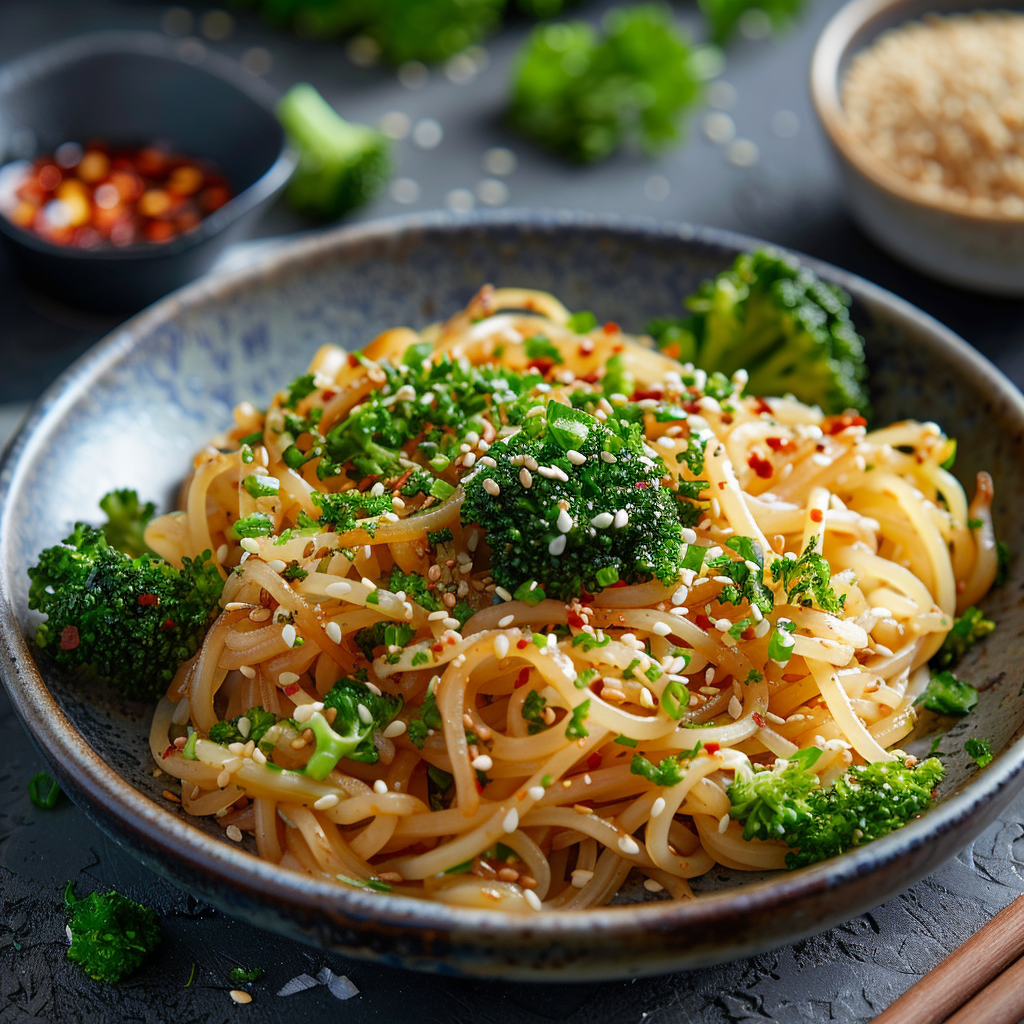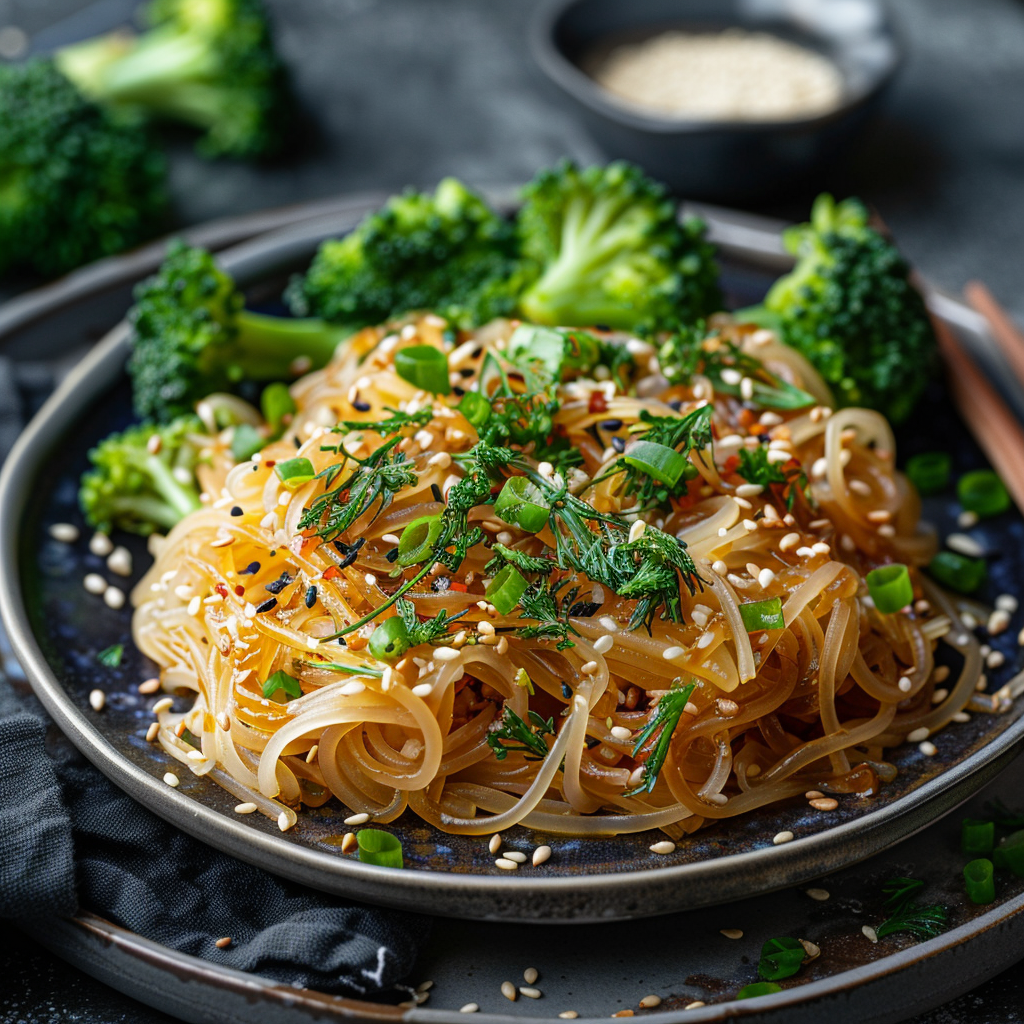Why You’ll Fall in Love with Potato Noodles
I’ll never forget the first time I made potato noodles. It was a chilly Sunday afternoon, and I wanted to try something new for dinner. My kids were skeptical—kids always are—but as soon as they smelled the savory aroma wafting through the kitchen, their eyes lit up. By the time we sat down to eat, even my picky eater was reaching for seconds. That’s the magic of potato noodle recipes: they’re comforting, easy to make, and versatile enough to suit any taste.
The Story Behind Potato Noodles
Potato noodles have been around for centuries, popping up in kitchens from Germany to Korea. In Germany, they’re known as “Schupfnudeln,” which are soft, potato-based dumplings often pan-fried until golden. Meanwhile, Korean cuisine has embraced sweet potato noodles, or japchae, in stir-fries bursting with color and flavor. Whether you’re making a hearty spiralized potato noodles recipe or a rich sweet potato noodle stir fry, these dishes carry a piece of history on every plate.
Why This Recipe is a Keeper
What makes this potato noodle dish stand out? First, it’s simple. You don’t need fancy ingredients or hours of prep time. Second, it’s healthy. Unlike traditional pasta, potato noodles are gluten-free and packed with nutrients. Finally, they’re fun! Shaping them into gnocchi-like bites or spiraling them into curly strands feels like playtime in the kitchen.
Perfect Times to Whip Up Potato Noodles
This dish shines at family dinners, potlucks, or cozy nights in. Serve your sweet potato noodles recipe top chef-style at a dinner party, or enjoy a quick weeknight meal with a roasted sweet potato noodles dish. They’re also perfect for meal prep since they store well in the fridge.
Ingredients You’ll Need
- 4 medium potatoes (or sweet potatoes)
- 1 cup all-purpose flour (plus extra for dusting)
- 1 egg (optional)
- 1 tsp salt
- 2 tbsp olive oil
- Your choice of sauce or seasoning
Substitutions for Flexibility
- Swap regular potatoes for sweet potatoes if you want a sweeter twist.
- Use gluten-free flour if you’re catering to dietary needs.
- Add spinach or herbs to the dough for extra flavor and color.
Step 1: Preparing the Potatoes
Start by boiling or baking your potatoes until they’re tender. I prefer baking because it keeps the moisture content lower, which makes the dough easier to handle. Once cooked, let them cool slightly before peeling. Mash them until smooth—there should be no lumps! Pro tip: Use a ricer for an ultra-smooth texture.
Step 2: Making the Dough
In a large bowl, mix the mashed potatoes with flour, salt, and egg. Knead gently until the dough comes together. Be careful not to overwork it; too much handling can make the noodles tough. If the dough feels sticky, add a little more flour, but do so sparingly.
Step 3: Shaping the Noodles
Divide the dough into small portions and roll each one into long ropes about the thickness of your finger. Cut the ropes into bite-sized pieces. For a fancier look, press each piece against a fork to create ridges. These will catch sauces beautifully when cooked. Chef’s tip: Dust your work surface lightly with flour to prevent sticking.
Step 4: Cooking the Potato Noodles
Bring a pot of salted water to a boil. Drop the noodles in batches and cook until they float to the surface, usually within 2-3 minutes. Remove them with a slotted spoon and toss them in olive oil to keep them from clumping. Alternatively, pan-fry them for a crispy exterior—a must-try!
Timing Breakdown
- Prep Time: 20 minutes
- Cooking Time: 15 minutes
- Total Time: 35 minutes
Chef’s Secret
To elevate your fresh kitchen sweet potato noodles recipe, toss the cooked noodles with garlic-infused oil and fresh herbs like parsley or thyme. The aroma alone will have everyone rushing to the table.
An Interesting Tidbit
Did you know that sweet potato noodles are a staple in Korean cuisine? Known as dangmyeon, they’re chewy, translucent, and perfect for stir-fries. If you’re wondering where to buy Korean sweet potato noodles, check your local Asian grocery store or order online. Trust me, once you try them, you’ll be hooked!
Essential Kitchen Tools
- Potato ricer or masher
- Rolling pin or clean hands
- Large pot for boiling
- Frying pan (optional)
How to Store Potato Noodles
If you’ve made a big batch, don’t worry—they store wonderfully. Let the noodles cool completely before transferring them to an airtight container. Refrigerate for up to three days. To reheat, simply sauté them in a bit of butter or oil until warmed through.
For longer storage, freeze the uncooked noodles on a baking sheet, then transfer them to a freezer bag. They’ll last up to two months. Just drop frozen noodles directly into boiling water when ready to use.
Avoid storing cooked noodles in sauce unless you plan to eat them within a day. Sauces can make the noodles soggy over time.
Tips and Advice
- Don’t skip the resting step if your recipe calls for it—it helps the dough relax.
- Experiment with different sauces, like pesto or marinara, to find your favorite combo.
- If using sweet potatoes, roast them instead of boiling for a deeper flavor.
Presentation Ideas
- Serve on a wooden board with a drizzle of vibrant pesto.
- Garnish with microgreens or grated Parmesan for a pop of color.
- Arrange in a nest-like swirl for a rustic touch.
Healthier Alternatives
Here are six variations to make your potato noodle dish even healthier:
- Zucchini Spirals: Swap half the potatoes with zucchini for fewer carbs.
- Veggie-Packed Stir Fry: Add bell peppers, broccoli, and carrots.
- Herb-Infused Dough: Mix in fresh basil or rosemary for added nutrition.
- Gluten-Free Flour Blend: Use almond or chickpea flour instead.
- Low-Sodium Sauce: Opt for homemade tomato sauce with minimal salt.
- Air-Fried Crisps: Bake thin slices of potato noodles for a crunchy snack.
Mistake 1: Overworking the Dough
Overworking the dough is a common error that leads to tough noodles. Remember, gentle handling is key. If the dough starts feeling elastic, stop kneading immediately.
Mistake 2: Skipping the Flour Dust
Without enough flour, the noodles may stick together during cooking. Always dust your workspace generously to avoid frustration.
Mistake 3: Crowding the Pot
Cooking too many noodles at once lowers the water temperature, resulting in uneven cooking. Cook in small batches for best results.
FAQs About Potato Noodles
What Are Potato Noodles?
Potato noodles are exactly what they sound like: noodles made primarily from potatoes. They can be shaped into various forms, such as spirals or gnocchi-like pieces, and are often used as a gluten-free alternative to traditional pasta.
Are Potato Noodles Healthy?
Yes! Compared to regular pasta, potato noodles offer fewer calories and carbohydrates while providing essential vitamins like vitamin C and potassium. Plus, they’re naturally gluten-free.
Is Gnocchi a Noodle or Potato?
Gnocchi is technically both. It’s made from potatoes but shaped like small dumplings or noodles. Think of it as the love child of the two worlds!
What Are German Potato Noodles Called?
In Germany, potato noodles are called “Schupfnudeln.” They’re typically served pan-fried with bacon and onions—a true comfort food.
Where Can I Buy Korean Sweet Potato Noodles?
You can find Korean sweet potato noodles at most Asian markets or online retailers like Amazon. Look for brands labeled dangmyeon.
How Do I Make Spiralized Potato Noodles?
Use a spiralizer to cut raw potatoes into noodle shapes. Then, blanch them briefly in boiling water before adding to your dish.
Can I Roast Sweet Potato Noodles?
Absolutely! Toss them with olive oil, salt, and pepper, then roast at 400°F for 15-20 minutes for a delicious side dish.
What’s the Nutritional Value of Japchae Sweet Potato Noodles?
Japchae noodles are low in fat and calories but high in fiber, making them a nutritious option. Pair them with veggies for a balanced meal.
Where Can I Find Potato Noodles in London?
Check specialty stores or markets like Whole Foods Market or Asian grocers. Many places now stock fresh or dried versions.
How Do I Prevent My Noodles From Sticking?
Toss the cooked noodles with a little oil right after draining to keep them separated and ready to serve.
Final Thoughts
Potato noodles are a delightful way to bring creativity and flavor to your meals. Whether you’re making a classic potato noodles gnocchi or experimenting with a sweet potato noodle stir fry, this dish promises joy in every bite. So grab those potatoes, get creative, and enjoy the magic of homemade noodles!

Potato Noodle
Ingredients
Equipment
Method
- Start by boiling or baking your potatoes until they’re tender; let them cool slightly before peeling.
- Mash the potatoes until smooth.
- In a large bowl, mix the mashed potatoes with flour, salt, and egg; knead gently until the dough comes together.
- Divide the dough into small portions and roll each portion into long ropes; cut the ropes into bite-sized pieces and press against a fork to create ridges.
- Bring a pot of salted water to a boil and drop the noodles in batches until they float, usually within 2-3 minutes.
- Remove noodles with a slotted spoon and toss in olive oil to prevent clumping; optionally, pan-fry them for a crispy exterior.



